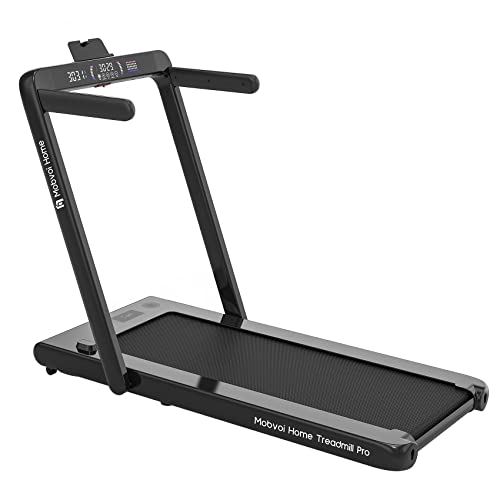The Walking Machine: A Comprehensive Guide to Your Fitness Companion
In today's busy world, where time is a high-end, maintaining a constant exercise routine can be a challenge. For lots of, a walking machine-- commonly understood as a treadmill-- serves as a perfect physical fitness buddy. This article supplies a thorough look at walking machines, including their benefits, types, maintenance tips, and frequently asked questions.
Why Choose a Walking Machine?
Walking machines provide a useful and reliable way to incorporate cardiovascular exercise into life. Here are numerous crucial advantages:
- Convenience: Walking machines allow individuals to work out anytime, regardless of weather conditions or time restraints. They are perfect for hectic schedules.
- Flexibility: Users can stroll, jog, or run at their own speed and strength.
- Security: Walking machines present a lower threat of injury compared to outdoor walking or running, particularly for newbies or those recuperating from injuries.
- Tracking Progress: Many treadmills included integrated screens that track metrics like speed, range, and calories burned.
Types of Walking Machines
When thinking about a walking machine, it's important to choose the right type based upon specific fitness objectives and space constraints. Below are the primary kinds of walking machines:
| Type | Description |
|---|---|
| Manual Treadmills | These machines do not have a motor, and users need to walk or go to turn the belt. |
| Electric Treadmills | Powered by an electric motor, permitting users to set the speed and incline effortlessly. |
| Folding Treadmills | Developed for simple storage, these treadmills can be folded up when not in usage. |
| Desk Treadmills | Ideal for a double work and exercise environment, these compact machines enable walking while working. |
| Incline Trainers | These permit users to mimic uphill walking, enhancing exercise intensity and calorie burn. |
Choosing the Right Walking Machine
Picking the right walking machine can considerably affect motivation and effectiveness. Here are some elements to consider:
Key Features to Look For
- Motor Power: An effective motor ensures a smooth and consistent workout. For periodic walkers, a 1.5 HP motor is normally sufficient; for heavier use, look for 3.0 HP and above.
- Belt Size: A larger and longer belt offers more area for a comfortable stride. Requirement sizes vary from 16 inches wide and 50 inches long.
- Incline Options: Adjustable incline settings can mimic walking or running uphill, increasing the strength of the exercise.
- Shock Absorption: Good shock absorption lowers the danger of joint injuries and enhances comfort.
- Console Features: Look for built-in exercises, heart rate screens, and connection features like Bluetooth for a more interesting experience.
Spending plan Considerations
Walking machines been available in a wide variety of rates, depending on features and building and construction quality. Here's a rough budget breakdown:
| Price Range | Features |
|---|---|
| Under ₤ 300 | Standard handbook or little electric treadmills with minimal features. |
| ₤ 300 - ₤ 700 | Advanced electric treadmills with incline, medium power motors, and better warranties. |
| ₤ 700 - ₤ 1500 | High-quality electric treadmills with larger built-in screens, extensive features, and warranties. |
| ₤ 1500 and above | High-end designs offering sophisticated innovation, features, and long lasting construction for major physical fitness enthusiasts. |
Upkeep Tips for Your Walking Machine
To make sure longevity and optimum performance of a walking machine, consider the following maintenance tips:
- Regular Cleaning: Dust and sweat can accumulate on the machine and the belt. Clean down the surfaces and tidy the belt regularly.
- Lubrication: Depending on the model, oiling the running belt periodically can avoid wear and tear. Examine the producer guidelines for advised lubrication schedules.
- Examination: Periodically check the machine for loose screws or worn parts. Best Home Treadmill UK and change as needed.
- Calibration: Occasionally, check the calibration of your machine's metrics to guarantee they provide accurate information.
- Correct Use: Follow the producer's recommendations for weight limitations and functional guidelines.
Frequently Asked Questions About Walking Machines
1. Are walking machines a great workout?
Yes, walking machines offer an outstanding cardiovascular exercise, can help with weight loss, and improve overall health.
2. How often should I use a walking machine?
Aim for a minimum of 150 minutes of moderate-intensity aerobic activity weekly, which can easily be achieved with regular sessions on a walking machine.
3. Can I reduce weight on a walking machine?
Yes, integrating a walking machine regimen into a healthy diet plan can promote weight reduction, particularly if integrated with periods and incline training.
4. Is it safe for senior citizens to use a walking machine?
Yes, walking machines can be safe for elders with low-impact settings and security functions like hand rails. However, people ought to seek advice from their doctor before beginning any exercise program.
5. What's the difference in between a treadmill and a walking machine?
The term "walking machine" generally refers to a treadmill meant for walking, while "treadmill" can refer to machines utilized for various intensities, consisting of running.
With their flexibility and convenience, walking machines can considerably boost one's fitness journey. By carefully choosing the best type, guaranteeing correct maintenance, and integrating different workout methods, users can optimize their walking machine's benefits. As with any workout routine, consistency is essential to attaining long lasting fitness results.

